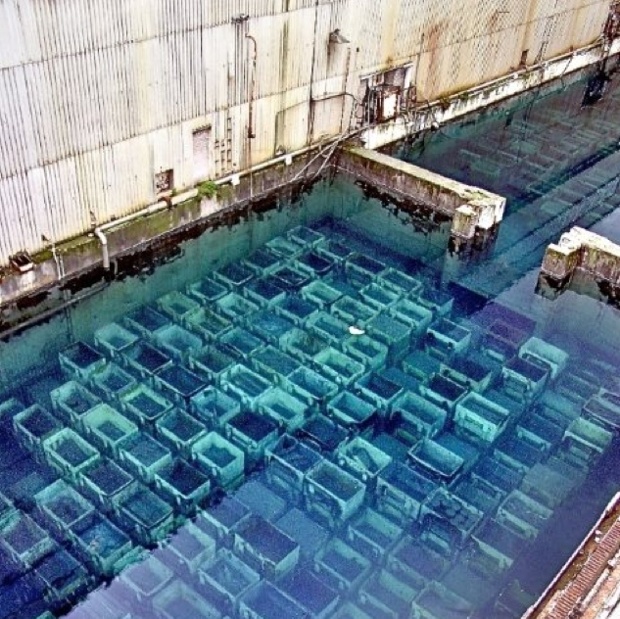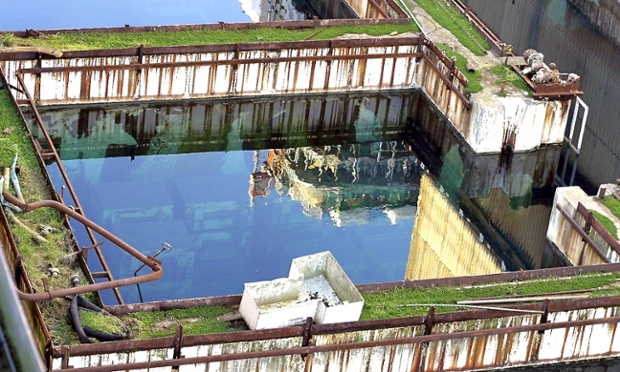Nuclear Headache: Take Two Aspirin, Call Me In One Hundred Thousand Years
Maybe using a likeness of Edvard Munch’s famous painting The Scream was someone’s idea of a joke. Humor is a logical response to the need to alert hikers in 12,000 A.D. to the dangers of this particular patch of desert.
This episode of This Planet is 4 minutes long - more than twice the length of most of our videos. That's because, between Three Mile Island and the kitty litter fiasco (more on that below), there is way too much to say. And yet we immediately got bogged down in just how much our viewers know about nuclear power.
I. THE ACCIDENTS
The first nuclear accident to attract worldwide attention – at Three Mile Island, Pennsylvania – happened just 36 years ago, and many people have already forgotten it, or never knew it happened.
That's enough time for some excellent documentaries to have been produced. We like this one:
Three Mile Island’s Reactor One is now permanently sealed and off-limits to human visitation for a few tens of thousands of years. A key element of that crisis was that officials minimized the danger to the public – a mistake American nuclear officials say they will not make again.
In any case, only seven years later another accident happened – but worse. Much, much worse. When you combine an empire on its knees, a bureaucracy built on secrecy and a culture of non-responsibility, you get the Soviet Union of 1986, and you get Chernobyl, the worst nuclear contamination -- ever:
Now off-limits to human visitation for a few tens of thousands of years, the Chernobyl explosion caused untold deaths in Ukraine and birth defects across Europe. A key element of that crisis was that officials minimized the danger to the public – a mistake Russian nuclear officials say they will not make again.
In what seemed a positive sign that the nuclear industry is improving, 24 years went by without a major accident. These were the very years when the danger to the climate of burning fossil fuel became clear. The bald reality of our imperiled climate made nukes look better to some environmentalists, including the Whole Earth Catalogue founder and icon of a certain age, Stewart Brand.
This Planet quotes Brand in our story, from Inhabitat’s longer interview.
This writer may well have joined Mr. Brand in advocating nuclear power, if the 25th year after Chernobyl - 2011 - had not introduced a new place name into the nuclear power hall of shame. An earthquake knocks out power to the Fukushima Daiichi nuclear power planet; the earthquake creates a tsunami which floods the plant's backup generators, allowing its nuclear fuel to melt down; the containment structure explodes. This video explains each excruciating step in the disaster.
Now off-limits to human visitation for a few tens of thousands of years, the poison spewing from Fukushima has yet to be fully contained. A key element of that crisis was that officials minimized the danger to the public – a mistake Japanese nuclear officials say they will not make again.
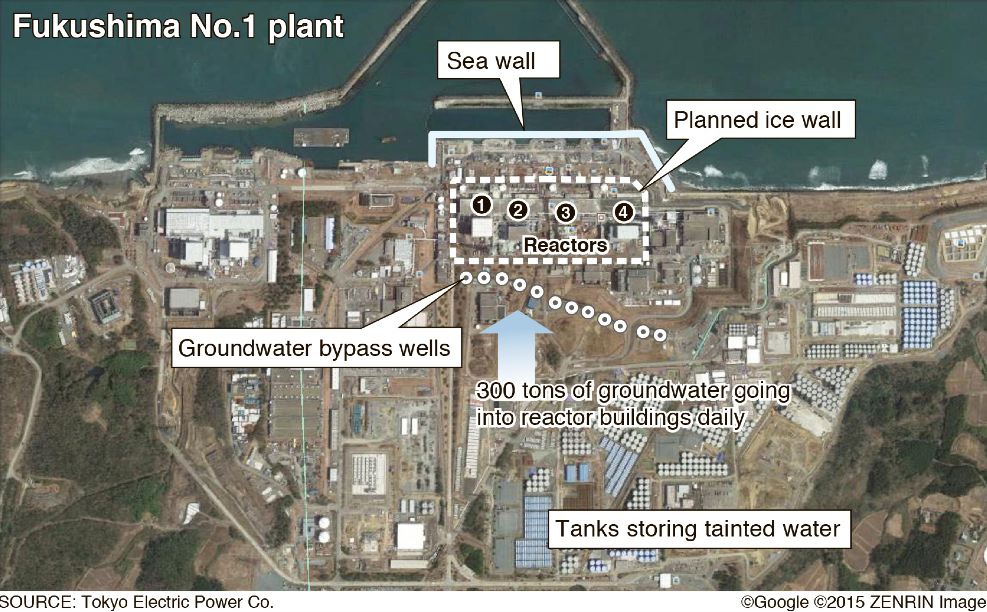
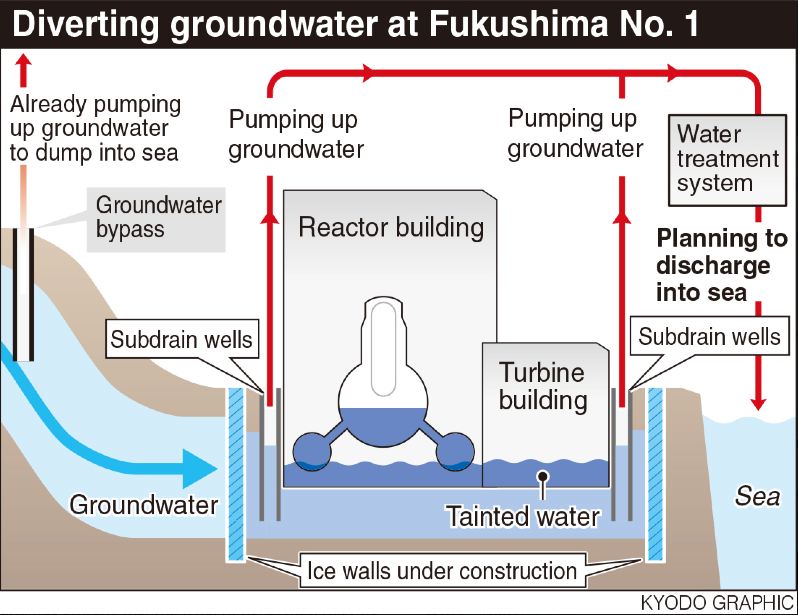
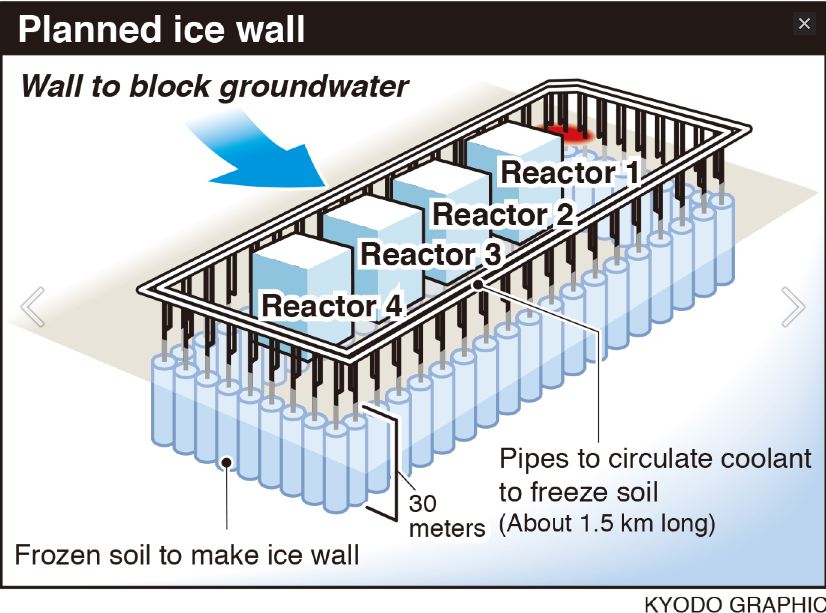
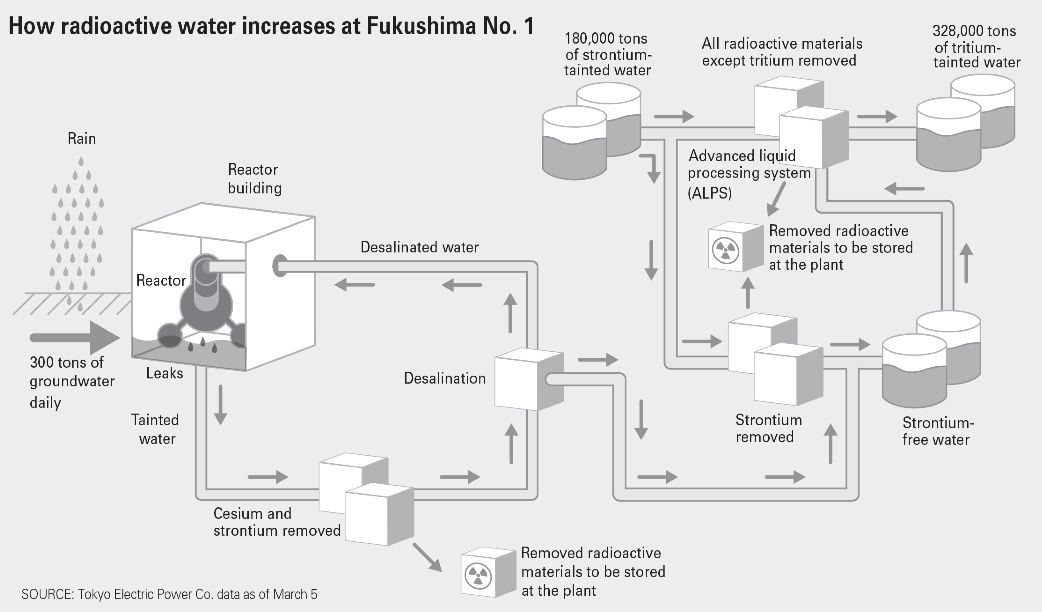
These images show plans for stoping the flow of water in the future, including creating a perimeter of frozen ground around the building complex.
II. THE WASTE
Even if there were never another nuclear accident, there is one big problem with nuke plants: their waste products will remain radioactive from anywhere between 10,000 and 100,000 years. Wikipedia says:
High Level Waste (HLW) accounts for over 95 percent of the total radioactivity produced in the process of nuclear electricity generation. The amount of HLW worldwide is currently increasing by about 12,000 metric tons every year, which is the equivalent to about 100 double-decker buses or a two-story structure with a footprint the size of a basketball court.[32] A 1000-MW nuclear power plant produces about 27 tonnes of spent nuclear fuel (unreprocessed) every year.[33]
On top of that, much of the waste will generate heat for many years, and so must be stored in water that is continually circulated to stay cool.
What could possibly go wrong with nuclear waste cooling ponds?
In 2014, The Guardian newspaper ran these images, of tanks that have held nuclear waste in the UK since 1962.
The exposé goosed the British government into speeding up its program to put this waste in casks, ready for burial.
Where will radioactive casks be stored?
The nuclear waste that is not in cooling ponds is in above-ground casks...including that from 1979's Three Mile Island accident.
Wha - did you think that nuke waste just did it's job of poisoning the locals then went away?
There is only one place currently being built to contain high-level nuclear waste. Named Onkalo ("hiding place" in Finnish), it is under construction in Finland, and will be for years to come. You can watch the extraordinarily beautiful and thoughtful film about Onkalo, Into Eternity, now online.
Hiding waste for 100,000 years raises philosophic as well as safety questions.
• Will anyone know it's there in even 10,000 years, let alone 100,000?
• Is it ethical to just hide it and hope no one ever digs there?
• Or will it become a legend, and could that legend transmute the "hiding place" from "buried danger" into "buried treasure"?
• How do you make a warning sign anyway, for people who will have a language you can't know and a culture you can't understand?
III. THE KITTY LITTER
The story appeared on Forbes.com about a year ago. There’s just no point in saying it any way but directly quoting the article:
Nuclear Waste Leak Traced To --- Kitty Litter
"You might have heard that the most likely culprit for the Valentine's Day radioactive leak was...kitty litter!
"Yes. The wrong kitty litter was probably used to treat some of the nuclear waste recently disposed in the world’s only deep underground nuclear waste repository, near Carlsbad in New Mexico. Cat litter has been used for decades in radiochemistry labs and nuclear facilities to stabilize certain radwastes, like liquid scintillation solutions, evaporator bottoms, and other materials that have nitrate salts in solution.
"… Unfortunately, someone working with this waste, before it was to be shipped to WIPP [Waste Isolation Pilot Plant] , used a new “green” cat litter, made with materials like wheat or corn. These organic litters do not have the silicate properties needed to chemically stabilize nitrate the correct way."
It is kind of funny, except it isn’t. Because the number of nuclear reactors is growing all the time, while human inexactitude and lack of caution is the same as it ever was. According to this article on the Emerging Markets website, Russia alone, which competes with France and the U.S. to sell nukes worldwide, is building plants in Hungary and Jordan (two each), Egypt and Iran, while pitching their nuclear wares in Kenya, Ethiopia, South Africa, Brazil and Argentina.
..................................................................................................................................................................................................................................



